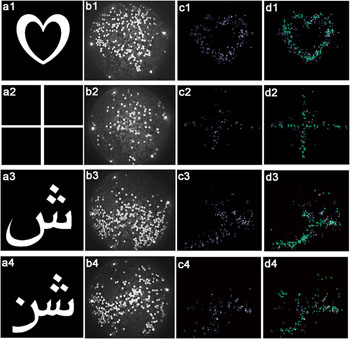Optical Fiber Brush Provides Flexible Imaging Interface
By LabMedica International staff writers
Posted on 16 Feb 2016
Computational techniques and ultrafast imaging have been combined to create a flexible fiber interface for imaging, with no need for lenses or a protective housing.Posted on 16 Feb 2016
Developed by researchers at the Massachusetts Institute of Technology (MIT; Cambridge, MA, USA), the imaging “brush” is made of a loose bundle of optical fibers. The fibers are packed onto a detection array at one end, with the positions of the fibers' free ends randomly distributed, and do not need to correspond to the position of the photodetectors in the array. By measuring the differing time of flight (ToF) measurements at which short bursts of light reach the photodetectors, the device can determine the fibers' relative location.

Image: Source, input images, shuffled, and reordered images using the optical brush (Photo courtesy of MIT Media lab).
For the prototype version, the researchers used a bundle of 1,100 fibers; perpendicular to the tips of the fibers were two ultrafast lasers which fired short bursts of light. The other end of the bundle was attached to a beam splitter, which was connected to both an ordinary camera and a high-speed camera that can distinguish optical pulses' times of arrival. Since the bursts of light came from two different directions, the software could use the differences in arrival time to produce a two-dimensional map of the positions of the fibers' tips, thus unscrambling the jumbled image captured by the conventional camera.
The 1,100-fiber prototype produced an image of roughly 33 by 33 pixel resolutions. But since the fibers used were off-the-shelf 300 micrometer fibers, building a device with fibers just a few micrometers in diameter could markedly increase the resolution without increasing the bundle size. A commercial application would also use the fibers to both transmit and receive light along individual fibers, and the system would gauge the time they took to reflect back. The study describing the system was published on February 12, 2106, in Nature Scientific Reports.
“Time of flight, which is a technique that is broadly used in our group, has never been used to do such things; previous works have used time of flight to extract depth information. But in this work, I was proposing to use time of flight to enable a new interface for imaging,” concluded lead author Barmak Heshmat, PhD, of the Camera Culture group at the MIT Media Lab. “Our technique does not require a coaxial calibration, offers a flexible field of view and is intrinsically multi-spectral. Therefore, it has significant potential for endoscopy, imaging in turbid media, and near-field batch probing.”
ToF measures the time that it takes for an object, particle, acoustic, electromagnetic, or other wave to travel a distance through a medium. This measurement can be used for a time standard to measure velocity or path length through a given medium, or as a way to learn about the particle or medium. The traveling object may be detected directly, such as by an ion detector in mass spectrometry, or indirectly, such as by light scattered by laser Doppler velocimetry.
Related Links:
Link to image













